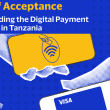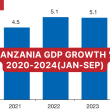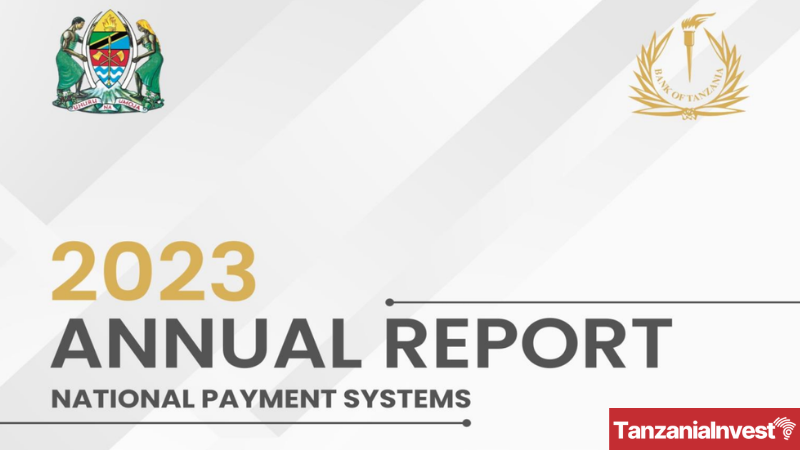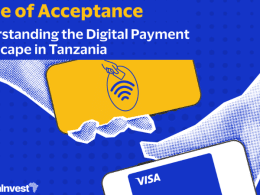The Bank of Tanzania (BOT) recently released its National Payment System Annual Report for 2023 which outlines significant advancements in the country’s digital payment infrastructure, showing a rise in adoption and usage across multiple platforms.
The report highlights Tanzania’s continued progress toward a more digital and inclusive financial system, with noteworthy expansion across various payment channels.
In 2023, the financial sector in Tanzania maintained its stability, driven by the efficient performance of key payment systems such as the Tanzania Interbank Settlement System (TISS), Tanzania Automated Clearing House (TACH), and Tanzania Instant Payment System (TIPS).
TISS, in particular, saw impressive growth in both local and foreign currency transactions. Local currency transactions processed through TISS increased by 7.28% in volume and 23.39% in value, reaching 4.11 million transactions worth TZS 256,028 billion.
Similarly, U.S. Dollar transactions rose by 31.13% in volume and 9.09% in value, totaling 545,161 transactions worth USD 27,501.77 million.
One of the key trends noted in the report is the move towards digital payments, as indicated by a rise in Electronic Fund Transfers (EFT) and a decline in cheque usage.
EFT transactions grew by 13% in volume and 19% in value, amounting to 19.10 million transactions worth TZS 14,422.41 billion.
On the other hand, local cheque transactions decreased by 11% in volume and 4% in value, while USD-denominated cheques saw an even sharper drop of 18% in volume and 19% in value.
The growth of interoperability in retail transactions was another highlight, with TIPS processing 235.04 million transactions valued at TZS 12,270.47 billion.
The number of financial service providers registered on the TIPS platform grew from 34 to 45, reflecting an increasing level of participation in the country’s digital payments space.
Merchant payments also saw considerable growth, with the number of merchants increasing by 68% to 657,346. Transaction volume for merchant payments surged by 80.98% to 301.21 million, while the value increased by 48.04% to TZS 17,918.12 billion.
This growth was supported by a favorable regulatory environment, particularly the removal of transaction fees on merchant payments.
Cross-border payment trends were mixed. While SWIFT transfers facilitated by banks saw a decline, with transaction volume and value dropping by 53.03% and 44.73%, respectively, Electronic Money Issuers (EMIs) experienced strong growth in transactions with the EAC and SADC regions.
Inflows through EMIs increased by 42.17% in volume and 68.03% in value, while outflows showed even higher growth, with volume up by 61.58% and value by 78.92%.
Mobile Money & Digital Financial Services
Mobile payments, which had experienced a slight decline in 2022, rebounded strongly in 2023 with a 40.78% increase in volume and a 35.33% increase in value.
Person-to-person (P2P) transactions emerged as the standout performer within the mobile money category, recording the highest growth among all transaction types. This surge in P2P transfers indicates a growing trust and reliance on mobile platforms for everyday financial interactions among Tanzanians.
The adoption of digital financial services enabled by mobile money saw impressive growth, particularly in digital credit and digital savings products.
While specific figures were not provided in the executive summary, the report emphasized the substantial uptake of these services.
Cross-border fund transfers facilitated by Electronic Money Issuers (EMIs), which include mobile money operators, experienced substantial growth, especially to the East African Community (EAC) and Southern African Development Community (SADC) regions.
Inflow transactions through EMIs increased by 42.17% in volume and 68.03% in value. Outflow transactions saw even more significant growth, with volume increasing by 61.58% and value by 78.92%.
Mobile phone remittances saw a slight decrease, with incoming transactions down by 10.50% in volume and 6.39% in value.
This decline in mobile remittances contrasts with the overall growth in the mobile money sector, suggesting a potential shift in remittance channels or changes in consumer behavior.
Meanwhile, bank-based remittances saw substantial increases, with incoming remittances rising by 67.66% to 839,734 transactions worth TZS 1,405.41 billion. Outgoing remittances through banks also grew significantly, by 40.55%, totaling TZS 899.70 billion.
The report also mentioned that the number of licensed electronic money issuers remained stable at six, the same as reported in 2022. This stability in the number of licensed operators suggests a mature market with established players.
Overall, the mobile money sector in Tanzania demonstrated resilience and strong growth in 2023, playing a crucial role in advancing digital financial services, facilitating cross-border transactions, and contributing to the country’s broader financial ecosystem. The sector’s robust performance indicates its potential to drive further financial inclusion and economic growth in Tanzania.










